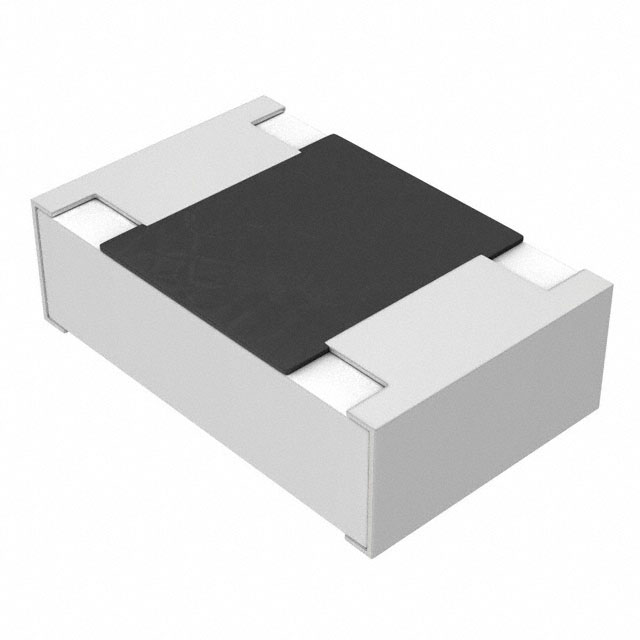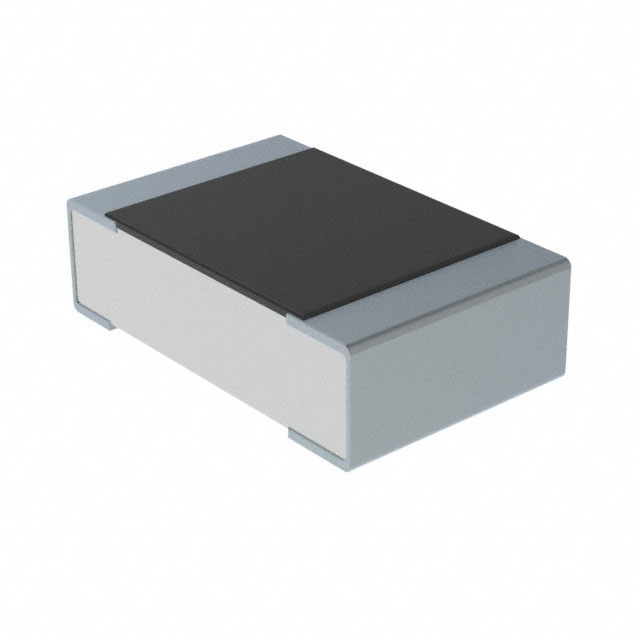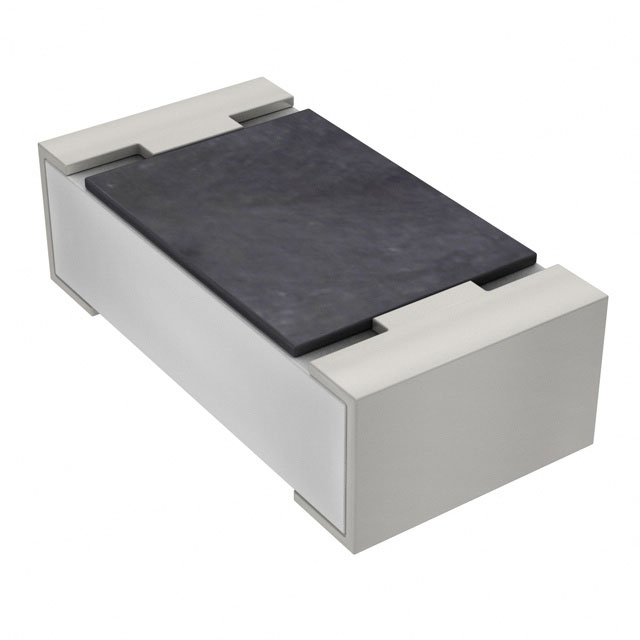
Decoding the Diode Symbol: Everything You Should Know
Global electronic component supplier ERSAELECTRONICS: Rich inventory for one-stop shopping. Inquire easily, and receive fast, customized solutions and quotes.
What is a Diode?
Because they convert alternating current (AC) into pulsing direct current (DC), diodes are often referred to as rectifiers. Diodes are rated based on their voltage, type, and current carrying capacity. An anode (positive lead) and a cathode (negative lead) determine the polarity of a diode. The majority of diodes only permit current to flow when the anode receives a positive voltage.

A diode is a two-terminal electronic component that allows current to flow in one direction while blocking it in the opposite direction. It's one of the simplest yet most fundamental semiconductor devices used in electronic circuits. Diodes are made from semiconductor materials, typically silicon or germanium, and consist of a P-N junction.
What is a Diode Symbol?
In circuit diagrams, the diode symbol is represented by an arrow that points in the direction of regular current flow. It is made up of a triangle pointing in the direction of a short line that is perpendicular to the arrow's path. The cathode (negative terminal) is represented by the line and the anode (positive terminal) by the triangle.

Types of Diodes and Their Diode Symbols:
| Image | Types of Diodes | Diode Symbol | Description |
 |
Generic Diode |
Figure 1: Generic Diode Symbol |
A rectifier diode or a generic diode is represented by this symbol. This semiconductor-based electrical component permits electricity to flow in one direction while obstructing it in the opposite direction. |
 |
Zener Diode |
Figure 2: Zener Diode Symbol |
A diode known as a Zener diode permits both forward and reverse current flow, but only until the reverse voltage hits the breakdown value, which is also referred to as the Zener voltage. |
 |
Schottky Diode |
Figure 3: Schottky Diode Symbol |
This kind of diode is composed of a tiny junction formed by a metal and an N-type semiconductor. It lacks the P-N junction seen in typical diodes. Because there isn't a capacitive junction, it features a very low forward voltage drop and quick switching (P-N junction). |
 |
Tunnel Diode |
Figure 4: Tunnel Diode Symbol |
This kind of diode, which operates on the tunneling effect principle, is constructed from strongly doped P&N semiconductors. The phenomenon known as "tuning" occurs when heavily doped PN junctions allow electrons to escape. Tunnel diodes are operated in a region of negative resistance, where current decreases with increasing voltage. |
 |
PIN Diode |
Figure 5: PIN Diode Symbol |
PIN stands for P-layer, I-layer, and N-layer in this three-layer diode. The strongly doped P and the N-type semiconductor are positioned between the "I" intrinsic semiconductor layer. In reverse bias, high voltage is blocked by the I layer. They're not employed in high-frequency applications because of their slow reverse recovery times. |
 |
LED – Light Emitting Diode |
Figure 6: LED – Light Emitting Diode Symbol |
When set up in forward bias, a P-N junction diode known as an LED (light emitting diode) emits light. It transforms electrical energy into light energy, and the semiconductor's energy gap determines the hue of the light. |
 |
Photo Diode |
Figure 7: Photo Diode Symbol |
Light energy is transformed into electrical energy by a photodiode. An electron-hole pair is created at the P-N Junction by light, and this pair then escapes as an electrical current. A photodiode is represented by this symbol. |
 |
TVS Diode |
Figure 8: TVS Diode Symbol |
One kind of diode used to suppress high voltage spikes is the transient voltage suppression diode. It is employed for unidirectional TVS (circuit protection) in reversed bias situations. |
Diodes are available in a variety of forms, and each has a distinctive symbol that denotes their particular characteristics and uses in electrical circuits. While specialized diodes have modified symbols, conventional rectifier diodes use the fundamental arrow symbol (▷|).
For example, Light Emitting Diodes (LEDs) have arrows pointing outward to signify light emission; Zener diodes have a cathode line shaped like a "Z" to regulate voltage; and Schottky diodes have a cathode line shaped like a "S" to indicate quick switching capabilities. Other varieties are photodiodes with inward-pointing arrows for light sensitivity, tunnel diodes with a central rectangle signifying negative resistance qualities, and varactor diodes with a parallel cathode line for voltage-controlled capacitance.
Specialized varieties with unique symbols or alterations include PIN, avalanche, and Gunn diodes. Since these symbols offer instant visual signals regarding the type of diode and its intended purpose inside a circuit, understanding them is essential for accurately interpreting and developing electronic schematics.
How Does a Diode Work?
P-type and n-type semiconductors are employed as diode materials. P-type semiconductors are semiconductors doped with boron (B) or another electron acceptor element, so named because most of their charge carriers are positive holes. Because the bulk of charge carriers in doped semiconductors are negative electrons, such as arsenic or another electron donor atom, these semiconductors are referred to be n-type semiconductors. P-type and n-type semiconductors can be combined to create a pn junction diode. For instance, p-type (n-type) dopant ions that have been accelerated to high energy can be injected into n-type (p-type) semiconductors to form pn junctions.
A diode is a pn junction created in this manner that has an electrode terminal connected to it. A diode is a pn junction created in this manner that has an electrode terminal connected to it. (Figure 9)

Figure 9: Diode Symbol
Only when a diode is forward-biased, or when the anode is more positively biased than the cathode, can electricity flow through it (Figure 10). Rectification is the process that permits current to flow solely in one direction.

Figure 10: Polarity of Diode
When reverse-biased, a diode usually doesn't conduct. However, a diode experiences a sudden significant current flow at a given voltage when the reverse-bias voltage is increased. Breakdown voltage (VBR) is the name given to this voltage. A small change in voltage results in a huge change in current in the breakdown area above VBR. Stated otherwise, there is very little change in voltage in response to a change in current. Transient voltage suppression (TVS) diodes, also known as ESD protection diodes, and Zener diodes are two types of diodes made specifically to take advantage of this constant-voltage nature. The IF-VF curve of a pn junction diode is displayed in Figure 11.

Figure 11: Characteristics of pn junction diode
Furthermore, a metal is utilized in place of a p-type or n-type semiconductor in one sort of diode. Depending on the metal-semiconductor combination, the metal-semiconductor junction may be a Schottky junction that displays rectification properties similar to a pn junction due to a difference in work function between a metal and a p-type (n-type) semiconductor. This kind of diode, known as a Schottky barrier diode (SBD), is distinguished by a low forward voltage.
How to Read a Diode Symbol?
Understanding a diode symbol's components and the direction of the current flow they represent is crucial for accurate diode reading. The triangle that points in the direction of a line is the typical diode symbol:
- Triangle: This stands for the diode's anode, which is the terminal that, in a forward-biased diode, receives conventional current.
- Line: This denotes the terminal from which current leaves the diode or cathode.
Current Direction
The direction of permitted current flow is indicated by the triangle's orientation in the diode symbol:
- Current passes from the anode through the diode and into the cathode when the diode is forward-biased, meaning the anode is more positive than the cathode. The diode conducts electricity in this particular state.
- Reverse-biased diodes, or those with a cathode that is more positive than the anode, obstruct current passage and function as effective insulators.
Identifying Terminals
The terms "anode" and "cathode" refer to a diode's two terminals in real-world applications. To keep track of which belongs to which:
- The triangle, which indicates the direction of current flow, points to the anode.
- The triangle's flat edge or a marker, like a band or a stripe, on the diode package serves as an indicator of the cathode.
- Gaining an understanding of these components enables you to accurately decipher circuit diagrams and forecast the behavior of the diode under various circuit scenarios.
What is a Diode Symbol on a Multimeter?
A multimeter's capacity to test diodes for correct functionality is shown by the diode symbol. You may determine whether the diode is operating appropriately by measuring the forward voltage drop and setting the multimeter to diode test mode. To ensure that the diode conducts in one direction and blocks in the other, a good test must examine the diode's reaction in both forward and reverse bias.
| Aspect | Description |
| Symbol | The diode symbol on a multimeter is typically represented by a triangle with a line across one end. This symbol looks like an arrow pointing to a vertical line. |
| Purpose | Used to test diodes and check their functionality. The multimeter measures the voltage drop across the diode to determine if it is working correctly. |
| Measurement Mode | When set to diode test mode, the multimeter sends a small current through the diode and displays the voltage drop. |
| Positive Probe | Connect the positive probe (red) to the anode of the diode. |
| Negative Probe | Connect the negative probe (black) to the cathode of the diode. |
| Forward Bias Reading | A good diode will show a voltage drop typically between 0.6V to 0.7V (for silicon diodes) when in forward bias. |
| Reverse Bias Reading | In reverse bias, a good diode will show no continuity or infinite resistance. |
| Checking Results | If the multimeter shows a reading in forward bias and no reading in reverse bias, the diode is generally functioning correctly. |
What is a Zener Diode Symbol?
With one notable exception, a Zener diode's sign is comparable to that of a regular diode. It is made up of an arrowhead or triangle that points in the direction of the cathode, which is represented by a vertical line. The primary distinction is that the vertical line ends in a little bend that resembles a "Z," signifying the Zener diode's unique characteristics.
![]()
Figure 12: Zener Diode Symbol
Zener Diode Symbol Features
Triangle: Indicates the direction of conventional current flow by pointing toward the cathode.
Vertical Line: Indicates the cathode; the cathode side is usually indicated by a band.
Bend in the Line: The Zener diode is distinguished from a standard diode by the bend at the end of the vertical line, which indicates that the diode can conduct under reverse bias once the breakdown voltage, or Zener voltage, is reached.
In circuit designs, Zener diodes—which are mostly used for voltage regulation and sustaining a stable output voltage under changing load conditions—are made easier to identify for engineers and technicians by this symbol.
Designing precision rails? See ADC reference (Vref) stability & accuracy.
What is a Schottky Diode Symbol?
A Schottky diode has a unique change to its symbol, which is identical to that of a regular diode. It has a triangle that symbolizes the anode and points in the direction of a vertical line that represents the cathode. The cathode line is extended to resemble an "S," signifying its special characteristics as a Schottky diode, and this is the main distinction.
 Figure 13: Schottky Diode Symbol
Figure 13: Schottky Diode Symbol
Schottky Diode Symbol Features
Triangle: Indicates the direction of conventional current flow by pointing towards the cathode.
Extended Cathode Line: The cathode's line is bent, giving it an "S" form that sets it apart from the traditional diode symbol.
This modification emphasizes the qualities of the Schottky diode, which make it appropriate for high-speed applications and rectification in electronic circuits. These qualities include its low forward voltage drop and quick switching capabilities.
What Does a Diode Symbol Look Like?
The basic diode symbol looks like an arrow pointing to a vertical line. The arrow is typically a triangle, and the line is perpendicular to the direction of the arrow. Variations of this symbol exist for different types of diodes, as described earlier.
| Aspect | Description |
| Basic Shape | The diode symbol consists of a triangle pointing towards a vertical line. |
| Triangle | The triangle represents the anode of the diode. It is drawn with the apex pointing towards the cathode. |
| Vertical Line | The vertical line at the end of the triangle represents the cathode of the diode. |
| Arrow | The arrow in the triangle indicates the direction of conventional current flow (from anode to cathode) when the diode is forward-biased. |
| Symbol Orientation | The symbol can be oriented in different ways depending on the circuit diagram, but the basic shape remains consistent. |
| Labeling | Sometimes, the anode and cathode may be labeled with '+' and '-' signs or letters 'A' and 'K' respectively. |
| Forward Bias | When the diode is forward-biased, current flows from the anode to the cathode, as indicated by the arrow direction. |
| Reverse Bias | When reverse biased, the diode blocks current flow, and the symbol helps to identify the correct connection to prevent reverse biasing. |
| Common Use | The symbol is used in circuit diagrams to show the orientation and connection of diodes in electronic circuits. |
The diode symbol, which consists of a vertical line and a triangle, is an essential component of electronic schematics. The cathode is shown by the vertical line, and the anode is represented by the triangle. When the diode is forward biased, the direction of the triangle's arrow represents the typical current flow. This symbol guarantees correct current direction and biasing and aids in understanding how a diode should be connected in a circuit. The validity and clarity of circuit designs are preserved when this symbol is used consistently throughout diagrams.
How To Connect A Diode in a Circuit?
To connect a diode in a circuit, do the following:
Determine the Cathode and Anode: The anode (positive) and cathode (negative) are the two terminals of a diode. Usually, a longer lead or a positive sign designates the anode, whereas a shorter lead or a stripe designates the cathode.
Attach the Anode to the Positive Terminal: According to the circuit schematic, attach the diode's anode to the battery's positive terminal.

Figure 14: How To Connect A Diode in a Circuit
Link the Cathode to the Load: The cathode needs to be linked to the next part of the circuit, which is usually the power source's negative terminal. Here, the LED and resistor are connected in series with the cathode.
Ensure Correct Orientation: Make Sure the Diode is Oriented appropriately: For current to flow in the intended direction, the diode needs to be oriented appropriately. The diode is positioned in forward bias in this diagram, which permits the current to move from the positive terminal to the negative terminal and back, lighting up the LED.
When the circuit is powered on, this arrangement guarantees that current passes through the diode, enabling the LED to illuminate. Reversing the diode would stop the current, which would stop the LED from turning on.
What Can a Diode Be Used For?
A typical diode can be used for many purposes, such as power supplies and sound effects production. The following circuit examples demonstrate the use of a diode and explain its function:
Sound Effects Clipping:
An overdrive sound effect known as "clipping" is produced by connecting two diodes in parallel but in opposing directions. This effect is frequently found in guitar pedals.

Figure 15: Sound Effects Clipping
Converting From AC to DC:
Occasionally, four rectifier diodes are arranged to form a bridge rectifier in order to convert an AC source into a DC using diodes. This is frequently used in power supplies after a transformer and before a voltage regulator.
After rectification, measurements usually hit an ADC. Learn how an ADC works.

Figure 16: Converting from AC to DC
Protecting From Voltage Spikes:
Since motors and relays are essentially inductors when the power is turned off, their current will attempt to continue flowing. To safely discharge them, diodes are employed.

Figure 17: Protecting from voltage spikes
Applications of Diodes
Diodes have many different roles in electronics, ranging from simple rectification in power supply to more intricate functions like signal mixing and overvoltage protection. They are necessary for demodulating signals, preserving voltage stability, and even in LEDs and other light-emitting devices. Furthermore, specialized diodes such as photodiodes and Zener diodes are essential for light sensing and voltage regulation, respectively. These adaptable parts, which offer protection, signal processing, and effective energy conversion, are fundamental to both analog and digital electronic circuits.
| Application | Description | Examples |
| Rectification | Diodes are used to convert AC (alternating current) to DC (direct current). | Power supplies, AC adapters |
| Voltage Regulation | Zener diodes maintain a stable output voltage by allowing current to flow in the reverse direction when a specific breakdown voltage is reached. | Voltage regulators in circuits |
| Signal Demodulation | Diodes are used to demodulate signals, particularly in radio receivers where they extract audio signals from RF signals. | AM/FM radio receivers |
| Overvoltage Protection | Diodes protect circuits from voltage spikes by clamping the voltage to a safe level. | Surge protectors, transient voltage suppressors |
| Signal Mixing | Diodes can be used in mixers to combine or multiply signals, especially in RF and microwave applications. | RF mixers, communication systems |
| LED (Light Emitting Diode) | Special diodes emit light when forward-biased, used in display and lighting applications. | LED displays, indicators, lighting |
| Logic Gates | Diodes are used in certain types of logic gates, particularly in simple digital circuits. | Diode-AND gates, diode-OR gates |
| Photodiodes | Diodes that generate current when exposed to light, are used in light detection and optical communication. | Solar cells, light sensors |
| Reverse Current Protection | Diodes prevent current from flowing in the wrong direction, protecting circuits from damage. | Battery-powered devices, power supplies |
Related Articles
- ·Insulated Gate Bipolar Transistor (IGBT): The Dragon Rider of High-Power Circuits
- ·Transistor Symbol: The Blockbuster Guide (With Zero Boring)
- ·ICD Electronics: Tiny Lightning, Relentless Reliability
- ·Smart Pill Dispensing Electronics: From Missed Doses to Mission Control
- ·Conditional Access Module (CAM): The Pay-TV Gatekeeper Engineers Actually Enjoy Reading About
- ·NC Formula Semiconductor: The Blockbuster Guide You Didn’t Know You Needed
- ·Electrosurgery Electronics: Turning RF Into a Surgical Superpower
- ·Endoscopic Imaging Electronics: Tiny Optics, Big Picture
- ·Instrument Cluster: The Dashboard Wizard That Makes You Feel Like Iron Man
- ·X-ray & CT Electronics: From Kilovolts to Reconstruction






















.png?x-oss-process=image/format,webp/resize,h_32)










